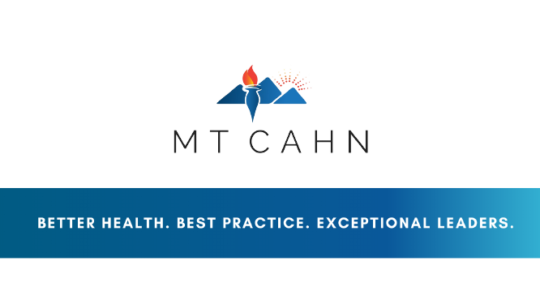The Academic Progression in Nursing (APIN) Grant
The Robert Wood Johnson Foundation (RWJF) announced in August 2014 that Montana was chosen to receive another $300,000, two-year grant in Phase II of its Academic Progression in Nursing program (APIN). APIN II is a 2 year, $300,000 project to advance state strategies to create a highly educated, diverse nursing workforce. Nurses are the largest group of health care providers and make a significant difference in the quality of our health. Their academic preparation needs to be ongoing to advance the health of Montanans now and into the future. The grant was created in response to the Institute of Medicine’s (IOM) report The Future of Nursing: Advancing Health, Leading Change. The APIN grant from RWJF focuses on the IOM’s research-based recommendation to increase the percentage of nurses with a BSN or higher degree to 80% by 2020 to improve health care outcomes (Aiken, 2010).
The Montana Center to Advance Health through Nursing (MT CAHN) joins California, Hawaii, Massachusetts, New Mexico, New York, North Carolina, Texas, and Washington state coalitions to work with academic institutions and employers. These projects will help nurses earn higher degrees and thereby improve patient care and fill the acute shortages of faculty and advanced practice nurses. In particular, the states will encourage strong working partnerships between colleges offering associate degrees in nursing and programs with baccalaureate degrees to create more efficient educational pathways for nurses to transition to higher degrees.
Montana APIN Goal:
Meet the Institute of Medicine’s recommendation that 80 percent of the nursing workforce be prepared at the baccalaureate level or higher by the year 2020.
Objectives (2014-2016):
- Work with nursing leaders from education and practice to create a model of nursing education that will enable academic progression from LPN to ASN to BSN to masters and doctoral levels.
- Expand current mentoring programs to reach more RN to BSN students and new BSN graduates entering the workforce.
- Increase the number of Native Americans that are in Montana nursing education programs and nursing leadership positions by July 2016.
- Develop a comprehensive sustainability plan for academic progression in nursing strategies throughout the state of Montana.
- Increase employer support of and engagement in academic progression in nursing initiatives in Montana through changes in practice and policy, participation in coalition leadership, and expanded involvement in preceptor and mentor opportunities.
- Expand the depth and breadth of the MT CAHN Preceptor Continuing Education and Recognition Program to academic/practice partnerships in each of the five MHA Regions of the state.
APIN I Outcomes (2012-2014)
- Montana APIN team conducted a preliminary nurse employer survey of 48 CAHs and 11 non-CAHs to help establish baseline data on the perspective of nurse education and education incentives in fall 2013. More specifically, the survey tool was designed to assess employer preference for nurse education level, facility incentives offered to pursue BSN level education and training in addition to basic demographic measures such as facility location and facility size. Results showed that 15% of the 48 CAHs and 62% of the 11 non-CAHs in Montana prefer to hire BSN nurses. Moreover, 72% of the 48 CAHs and 83% of the 11 non-CAHs offer incentives for nurses to get a BSN.
- Created the Montana Roadmap to Nursing Careers, an interactive electronic roadmap of nursing education in Montana.
- Communicated information about roles for nurses and nursing programs for RNs via the following webinars: Pathways to Nursing, RN to BSN Programs, Bachelor Degree Nursing Programs, & Nursing in Rural Montana. The webinars are archived on the MT CAHN website (https://mtcahn.org/).
- MT APIN team members first met with all schools of nursing to share information about APIN. From these meetings, common barriers and facilitators of academic progression in nursing were identified and shared with stakeholders throughout the state. Quarterly discussions with nursing program directors led to a common objective across programs:
- Develop a statewide nursing education model that maximizes academic progression towards BSN and graduate nursing degrees to meet the changing health care needs of Montanans.
- APIN team traveled over 3,500 miles across the state to host eleven regional meetings to discuss current and future needs for nurses in Montana. APIN work was communicated with over 200 individuals during the regional meetings and over 100 individuals at the Montana Nursing Education Summit. Regional qualitative data was collected from each meeting and presented at the Summit.
- Developed recommendations for admission standards at ASN and BSN programs which are being considered with the statewide model plan.
- Created Montana APIN Mentoring Program and the Art of Mentoring Workshop in October 2013 for RNs enrolled in MT baccalaureate nursing programs. The Mentoring Workshop has been offered 11 times across the state.
- Developed Montana APIN Preceptor Program, an online CE based course for current preceptors in MT. Both the mentoring and preceptor programs have been presented multiple times at both statewide and national meetings.
Montana APIN Goal:
Meet the Institute of Medicine’s recommendation that 80 percent of the nursing workforce be prepared at the baccalaureate level or higher by the year 2020.
